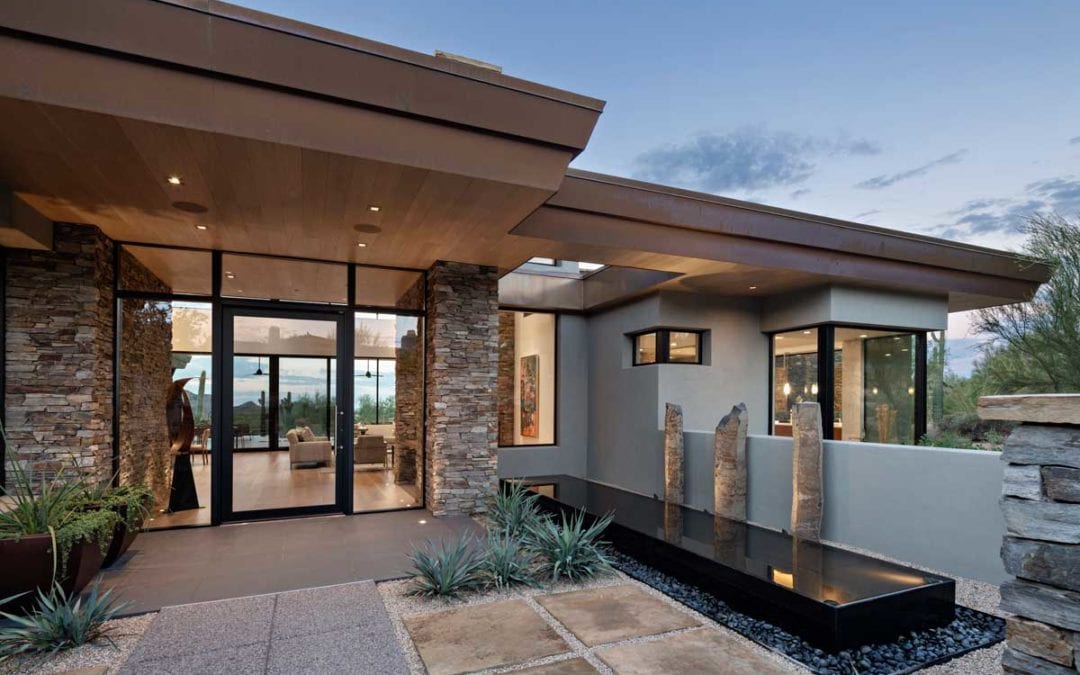There are many different definitions of what makes a happy home. In a recent study, 69% of respondents stated that a happy home is a place where you feel secure, 64% stated it was a place for relaxation, and another 57% stated it was a place where you could feel free to be yourself. Regardless of your personal interpretation of what makes a home happy, interior design plays a large part in how your home feels both to you and to guests. Home decor and design decisions have the ability to impact your mood for better or for worse, and it’s important to take this into consideration when decorating your living spaces.
Your Personality On Display
Imagine in your mind two kitchens. One is very minimalist and sleek, with minimal clutter and a cool color scheme, while the other features warm colors, sentimental clutter on the refrigerator, and a well-worn sense of functionality. Most people will subconsciously associate the latter with more welcoming and sentimental feelings than the former minimalist design. While this doesn’t necessarily mean that the owner is less sentimental, subliminally these messages are conveyed by the home decor and general design scheme.
The possessions you put on display in your home serve as a representation of your personal tastes and personality. Even if we don’t consciously think of this while decorating, guests will instinctively draw conclusions based on a few criteria.
- Functionality: Is there enough room for seamless function? This can include seating space for guests and family members at dining tables and in living spaces. It can also include the general layout of items. Are essentials easy to access in the open or does everything have its own storage space?
- Symbolism: Is your home full of sentimental pieces such as family photos, or do you prefer paintings and prints? As with the kitchen example, this isn’t necessarily indicative of personal sentimentality; however, family pictures inherently convey a more sentimental tone in comparison to other home decor pieces.
- Status Symbols Is your home full of name brand furniture and decor pieces or more generic items? A home designed entirely with IKEA, for example, will have a different feeling than one with mixed and matched brands.
The Illusion of Space
Even the smallest homes can be made to seem larger if the interior is designed correctly. The perception of space, a concept used by professional designers, aims to make a home seem more spacious and functional. To utilize these clever tricks, slimmer, scaled furniture should be chosen in place of bulkier pieces. Large wall mirrors can also be used to create depth, while ambient lighting and warm colors can accentuate this effect to further increase the illusion.
If relaxation is the goal of your happy home, increasing the perception of space can help it feel more open and inviting, while also providing a functional space that won’t feel too claustrophobic or enclosed.
Colors and Mood
Cool and warm colors can convey different feelings and completely transform a room. Blues, greens, and grays are considered cool colors, while reds, oranges, yellows, and cream colors are warm. Depending on the color, however, some colors can cross over. For instance, lime green is considered warm due to the high amounts of yellow. Cool colors can help promote relaxation and are perfect for bedrooms and other rooms where concentration and calmness need to be promoted. Similarly, warm colors are perfect for social rooms, where warmness and socialization are promoted.
When using a cool or warm color scheme, you should keep in mind to follow through with everything going into the room. For instance, if your living room is designed with warm colors, adding a cool colored floor is counter-intuitive. While this rule can be broken, unless you know the style you’re going for, it’s best to stick with one color scheme throughout.
Your home decor and design contributes greatly to how your home is perceived. Likewise, the design of your home can impact how you feel while inside. Keeping this in mind, you can get started creating the living space that you’ve always wanted and space that you will truly love to be in.


